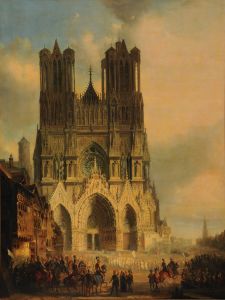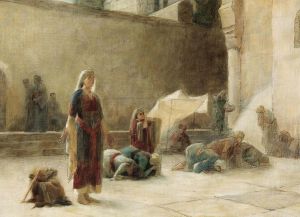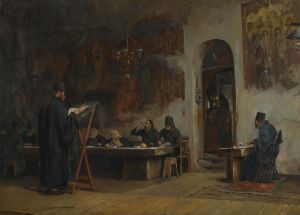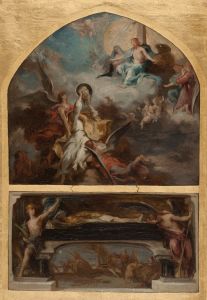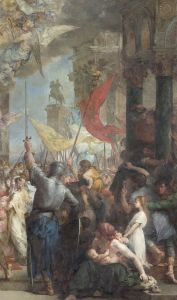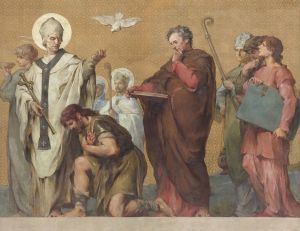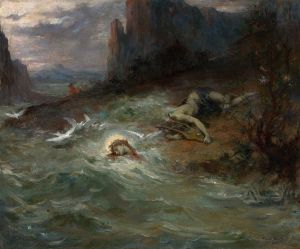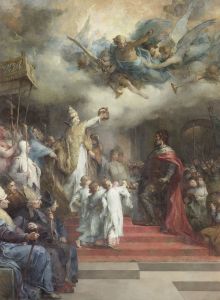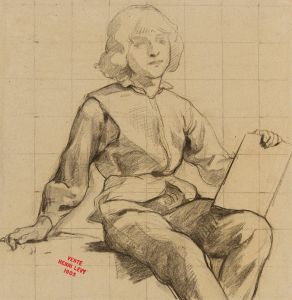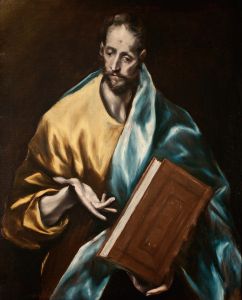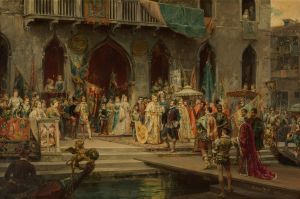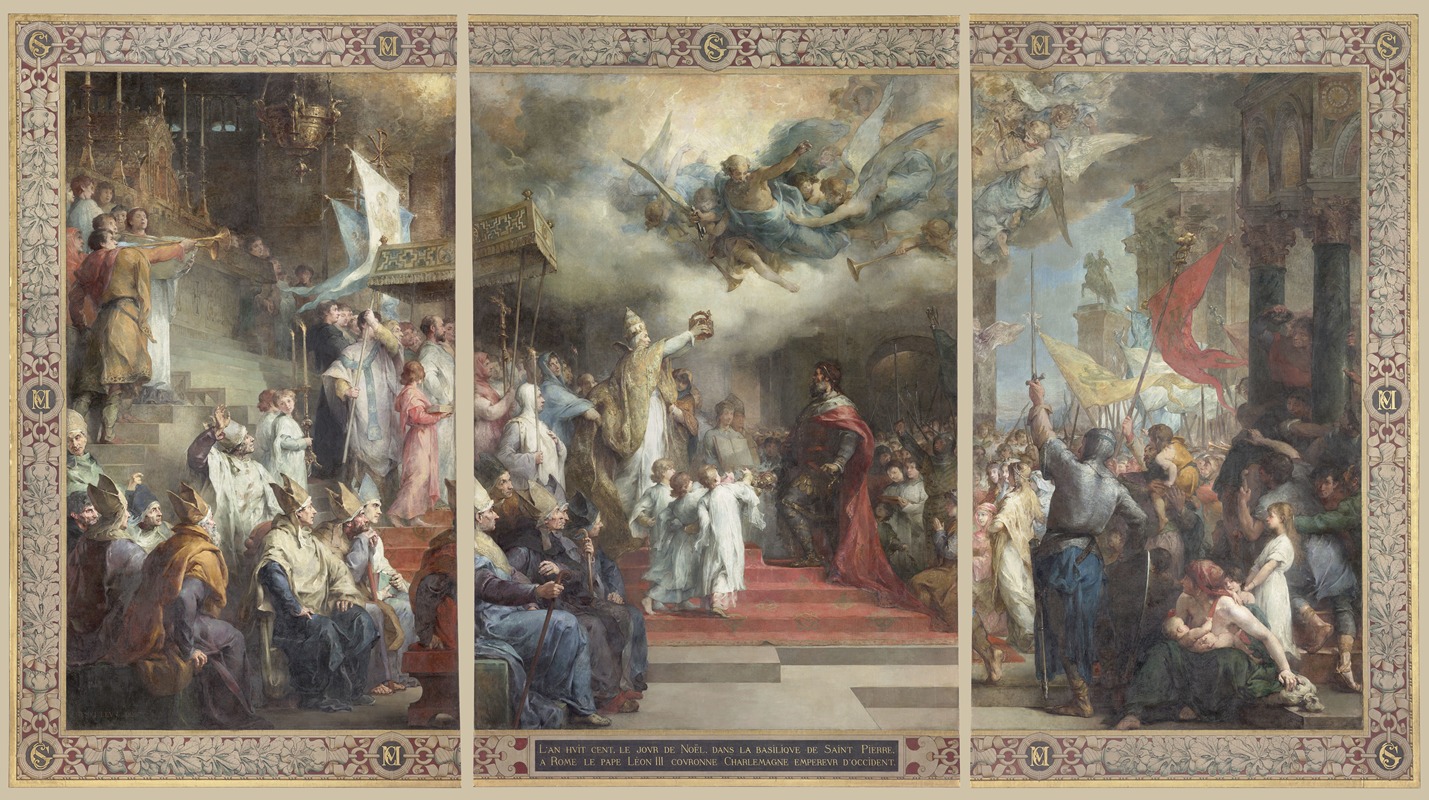
Le Couronnement de Charlemagne
A hand-painted replica of Henri Leopold Lévy’s masterpiece Le Couronnement de Charlemagne, meticulously crafted by professional artists to capture the true essence of the original. Each piece is created with museum-quality canvas and rare mineral pigments, carefully painted by experienced artists with delicate brushstrokes and rich, layered colors to perfectly recreate the texture of the original artwork. Unlike machine-printed reproductions, this hand-painted version brings the painting to life, infused with the artist’s emotions and skill in every stroke. Whether for personal collection or home decoration, it instantly elevates the artistic atmosphere of any space.
Henri Léopold Lévy was a French painter known for his historical and religious compositions. One of his notable works is "Le Couronnement de Charlemagne" (The Coronation of Charlemagne), which depicts the significant historical event of Charlemagne's coronation as Emperor of the Romans. This event took place on December 25, 800 AD, at St. Peter's Basilica in Rome, marking a pivotal moment in European history as it symbolized the fusion of Roman, Christian, and Germanic elements, laying the foundation for the Holy Roman Empire.
Lévy's painting captures the grandeur and solemnity of the coronation ceremony. Charlemagne, also known as Charles the Great, was the King of the Franks and Lombards before being crowned Emperor. His reign marked the Carolingian Renaissance, a revival of art, culture, and learning based on classical models. The coronation was conducted by Pope Leo III, who placed the imperial crown on Charlemagne's head, an act that signified the pope's authority to confer the title of Emperor, thereby establishing a precedent for the relationship between the papacy and the empire.
In Lévy's depiction, Charlemagne is often shown in a majestic pose, wearing regal attire befitting an emperor, with a crown on his head and a scepter in hand. The setting is typically grand, reflecting the architectural style of the time, with Romanesque or early Gothic elements. The painting might include various figures such as clergy, nobility, and attendants, all witnessing the historic moment. The use of light and color in Lévy's work would likely emphasize the divine right and sanctity associated with Charlemagne's rule.
Henri Léopold Lévy was part of the academic art tradition, which was characterized by its attention to detail, historical accuracy, and adherence to classical techniques. His works often reflect a deep understanding of historical events and figures, rendered with a dramatic flair that was popular in the 19th century. Lévy's ability to convey the significance of Charlemagne's coronation through his art contributes to the historical narrative of the Carolingian Empire and its impact on European history.
While specific details about the painting "Le Couronnement de Charlemagne" by Lévy, such as its current location or dimensions, are not widely documented, the work remains an important representation of a key historical event. Lévy's contribution to historical painting provides valuable insights into how 19th-century artists interpreted and celebrated the past, particularly events that shaped the course of Western civilization.
Overall, Lévy's "Le Couronnement de Charlemagne" serves as a visual testament to the enduring legacy of Charlemagne's reign and the cultural and political transformations that his coronation heralded. Through his art, Lévy not only commemorates a significant historical figure but also invites viewers to reflect on the broader implications of Charlemagne's empire and its influence on the development of medieval Europe.





